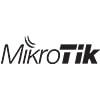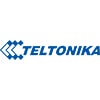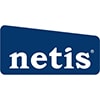EXTRALINK Optinių skaidulų suvirinimo aparatas AI-9 (EL-SPLICER-AI-9)
7800mAh ličio jonų baterija | LED lemputė |5.1 colių spalvotas LCD ekranas | Šešios Siemens el.pavaros | Lygiavimas pagal skaidulos šerdį | Greitas suvirinimas per 5 s | Automatinis ir rankinis režimai | Galios matuoklis ir VFL (Vizualinis klaidų aptikimas) | Nuotolinis valdymas
Produkto savybės:
Signal Fire is a dynamically developing company specializing in the manufacture of fiber optic splicers. Headquartered in Chengdu, it employs nearly 200 professionals. The devices are built with top-of-the-line components from renown manufacturers (including European ones), and based on technological solutions protected by numerous patents. The characteristic feature of splicing machines from Signal Fire is the use of smartphones for their configuration, archiving of operation data and for diagnostics. Products of this company have gained recognition in the markets of the whole world.
AI-8, AI-8C, AI-9 models employ core alignment technology (there is option of cladding alignment) that ensures minimum attenuation of the splices. Fiber ends are positioned by 6 stepper motors from Siemens, which is an absolute exception in this price category. The splicers can be used both for deployment of hundred-kilometer-long fiber optic trunks and in FTTH systems requiring short point-to-point connections, in LAN installations and fiber-based video surveillance systems. All models are controlled by a quad-core processor providing fast response times (the splicer is ready to work after 3 seconds) and ensuring short splicing and sleeve heating operations. The splicer are one of the fastest devices of its kind currently available on the market and the fastest in its price class.
AI-9 is the latest model from the line of optical fiber splicers, which have been successfully used in fiber optic installations of various categories for several years. Thanks to the fine-tuning of the software and an even better optimization of the splicing process, the entire process has been shortened to just 5 seconds. However, the most important feature of the new model is built in optical power meter module and visual fault locator . This allows for quick diagnostics of the optical path immediately after making a splice.
- the splicer is locked by default; it is necessary to unlock using a pre-defined phone,
- the splicer is unlocked to perform a certain number of splices - after that it will remain blocked,
- the splicer is unlocked for a specified time (user defines a range of dates); after that, the splicer will remain blocked.
- 6 motors for fiber positioning,
- core alignment or cladding alignment options,
- AUTO mode option,
- x300 magnification factor,
- quad-core processor providing fast response times,
- splicing time from 5 seconds,
- quick sleeve heating period (15 s for 40 mm sleeve),
- configuration with dedicated smartphone app (Android/iOS),
- the app can create operation reports (export to xls),
- large (5.1'') display with adjustable brightness,
- metal casing underneath covered with rubber layer,
- high-capacity exchangeable battery (7800 mAh, ca. 200 splicing and heating operations),
- battery charging time: ca 3.5 h,
- USB adapter for smartphone charging,
- universal fiber holders,
- high quality practical toolbox,
- large set of accessories.
The splicer is immediately ready for operation. For daily work it does not need any configuration or additional application. The application available in Google Play oraz AppStore is required only for advanced management, e.g. for changing the default splicing program or calibration settings due to extremely changing environmental conditions. The application also includes an instruction manual in English and instructional videos.
The application offered by the manufacturer allows the user to change parameters for both basic and advanced functions of the splicer. It is also possible to work in full manual mode with manual positioning of fibers in two planes. The application enables the user to view the history of splices made (optionally with pictures of bad ones) and export it to a spreadsheet (with date filtering option).
How to begin splicing? - preliminary steps and configuration
The prerequisite is to download the dedicated application for an Android device from Google Play store, or for an iOS device from AppStore. In most cases the device is a smartphone, so it will further be referred to as the phone.
The preliminary steps include running the downloaded app, switching on the splicer and selecting "Connect device" option. The connection uses Bluetooth technology. After selecting the splicer from the list of devices visible on the phone, the activation of the connection will be confirmed with an appropriate message in the main application window.
|
|
|
One of the advantages of the solution consisting in the configuration of the splicer using the app running on a mobile device is the ability to quickly and easily verify the availability of newer software versions. The user does not have to remember to check for a new software on the website of the manufacturer or distributor. It is enough to select the "Software update" option in the main window of the app.
In the case of a firmware update, it will be automatically downloaded to the phone and uploaded to the splicer. This process may take several minutes. It is recommended to periodically check the availability of the new software.
After entering the "Splice settings'' menu, select the type of the fibers to be welded ("Mode": SM - single-mode, MM - multimode, Auto - single-mode and multimode), "Endface quality" requirement (we recommend the "Standard" option), and "Align mode" (aligning to the core or cladding).
The other settings apply to the arc parameters. Their correct values are the consequence of the calibration described later in this article. Generally, it is not recommended to manually change any value of the parameters.
|
|
|
The "Function configuration" menu provides control of functions available before of after the splicing operation. By switching off some of them, the whole procedure can be shortened, but we do not recommend to change the default settings. The detailed description of each function can be found in the user manual.
|
|
|
By default, the shrinkage time for the heating reinforcement sleeve is set to 15 seconds. This period should be sufficient for most 40 mm sleeves. In the case of 60 mm sleeves we recommend to increase the time to 20 s. In each case, the time should depend on the obtained results (sleeves from various manufacturers may require a little bit different settings).
Calibration
The calibration of a fiber optic fusion splicer consists in adjusting the power and temperature of the electric arc to the prevailing environmental conditions. Properly adjusted arc parameters guarantee high quality of the splices, - both in terms of optical attenuation and mechanical strength. Therefore, the calibration should always be performed before splicing operations - at the beginning of work or in the case of changing the environment (e.g. from indoor to outdoor part of a system, especially when the difference in temperature between the locations is high).
|
|
|
Signal Fire fusion splicers use popular calibration method - the fibers located in the splicing chamber are subjected to a number of electric arcs. The fibers are melted and the software of the splicer measures and analyzes the distance at which the fiber faces move backward. On the basis of the measurements, the splicer determines the appropriate parameters of the electric arc.
The calibration of Signal Fire AI-8 is done by selecting "ARC calibration" option in the management application. When the fibers are inserted into the splicing chamber and the cover is closed (as in the case of normal splicing), the calibration process starts automatically. The whole procedure may take several minutes and sometimes should be repeated. When finished, the splicer switches to normal mode, i.e. is prepared for regular splicing operations. This fact is indicated by an icon on the display.
Splicing
Fibers should be prepared before splicing, starting with the removal of the acrylic protective coating (jacket) over a length of about 3-4 cm. Next, the fiber should be cleaned using a dust-free wipe and IPA alcohol. The cleaned fiber then goes into the cleaver:
|
|
|
When placing the fiber in the cleaver, make sure that the jacket lies between 10 and 15 mm of the scale. Depending on the fiber diameter (250 μm or 900 μm), use the appropriate v-groove in the cleaver. On the left side, you can see the fiber of a cable, on the right side, the fiber of a pigtail.
When placing the fiber in the splicing chamber, it is advisable to rest the front of the fiber on the v-groove (the photo above), then place there the rest of the fiber and close the cover. The end face of the fiber should be approximately halfway between the v-groove and the electrodes. It is not recommended to move the fiber when placing it in the v-groove, as this may result in the accumulation of dirt on the end face.
Heating protection sleeve
After finishing the splicing process, the splice should be protected with a heat-shrinkable sleeve. The heater is integrated in the splicer. The heating time has been preset in the application (15 s by default). Signal Fire A-8 starts heating automatically after closing the cover of the heater and the heat indication light is on (the photo below). After the end of the heating process the light goes off and a short sound signal is generated (the sound signalling can be turned off in the application). It should be remembered that before placing the new splice in a cassette, the protective sleeve should have enough time to cool down.
Produkto specifikacijos:
| Name | AI-9 |
| Code | L5875 |
| Fiber alignment | core-to-core cladding-to-cladding manual |
| Splicing cycle | 5 s |
| Sleeve heating cycle | 15 s (40 mm) |
| Number of motors | 6 |
| Auto-focus | Yes |
| Fiber type compatibility | SM (G.652, G.657), MM (G.651 - OM1, OM2, OM3, OM4), DS, NZDS (G.655) |
| Splice loss (typical) | 0.025 dB (SM), 0.01 dB (MM), 0.04 dB (DS/NZDS) |
| Return loss | min 60 dB |
| Calibration of the electric arc | manual |
| Durability of electrodes | ca. 3000 splices (the kit includes spare electrodes) |
| Fiber diameter range | buffer: 80-150 μm jacket: 100-1000 μm |
| Fiber cutting length | 8 - 16 mm (250 μm overlap): 16 mm (>250 μm overlap) |
| Strength test | Yes (2 N) |
| Magnification | x300 (in X or Y axis; x150 in both axes simultaneously) |
| Display | 5.1" color TFT, 800x480 pixels |
| Power | 7800 mAh lithium rech. battery, charging time 3.5 h 100-240 VAC charger with 13.5 VDC / 4 A output |
| Optical Power Meter |
Wavelenght: 850 nm, 1300 nm, 1310 nm, 1490 nm, 1550 nm, 1625 nm Measuring range: -70 dBm...+6 dBm Measurement error: < 0,3 dB |
| Visual Fault Locator |
Wavelenght: 650 nm Power: 15 mW Modes: constant or 2 Hz tone |
| Operating temperature range | -15°C...+50°C |
| Operating humidity range (RH) | < 95% (no condensation) |
| Weight | 2.08 kg (splicer with battery) 7.1 kg (whole kit) |
| Dimensions | splicer: 130 x 122 x 148 mm toolbox: 270 x 237 x 293 mm |
| Remarks | USB adapter configuration and diagnostic app protection sleeves up to 60 mm |
The kit includes:
- AI-9 fusion splicer
- toolbox
- set of spare electrodes
- fiber cleaver
- universal stripper
- stripper for flat cables
- bottle with dispenser
- cleaning brush
- carrying belts (for the splicer and the box)
- AC charger with USB adapter








































